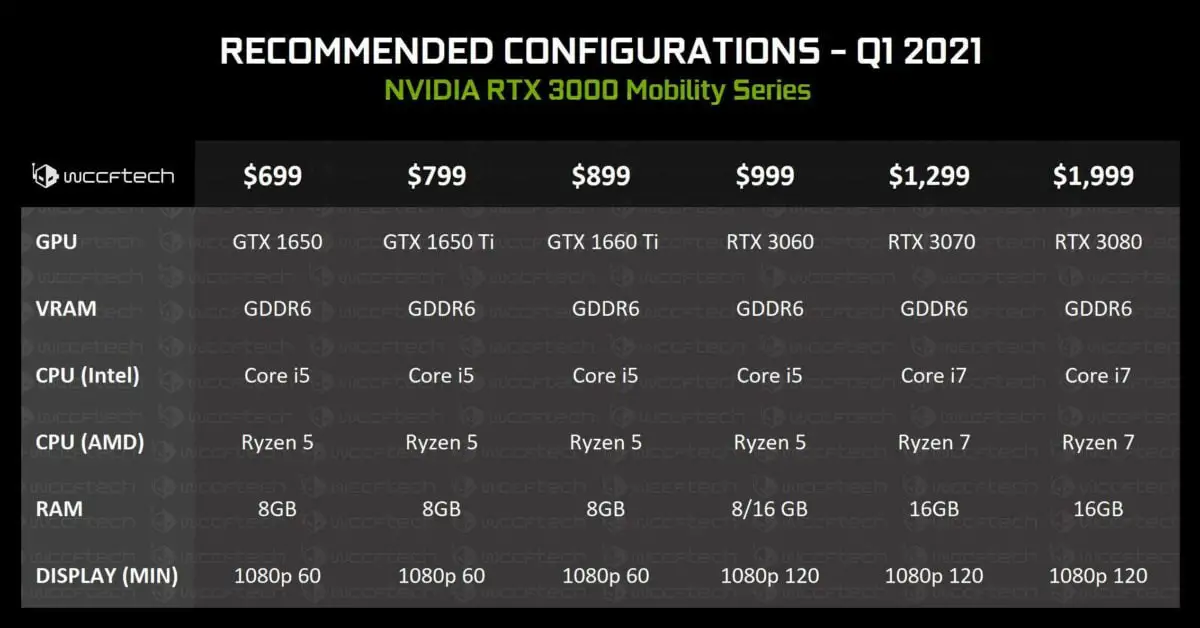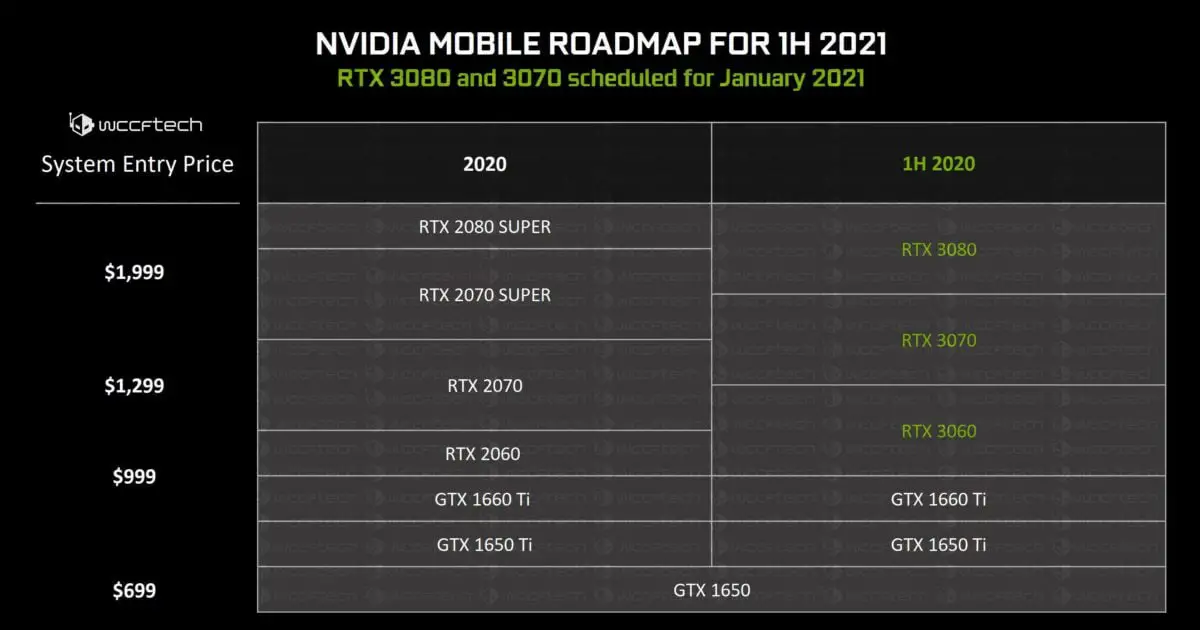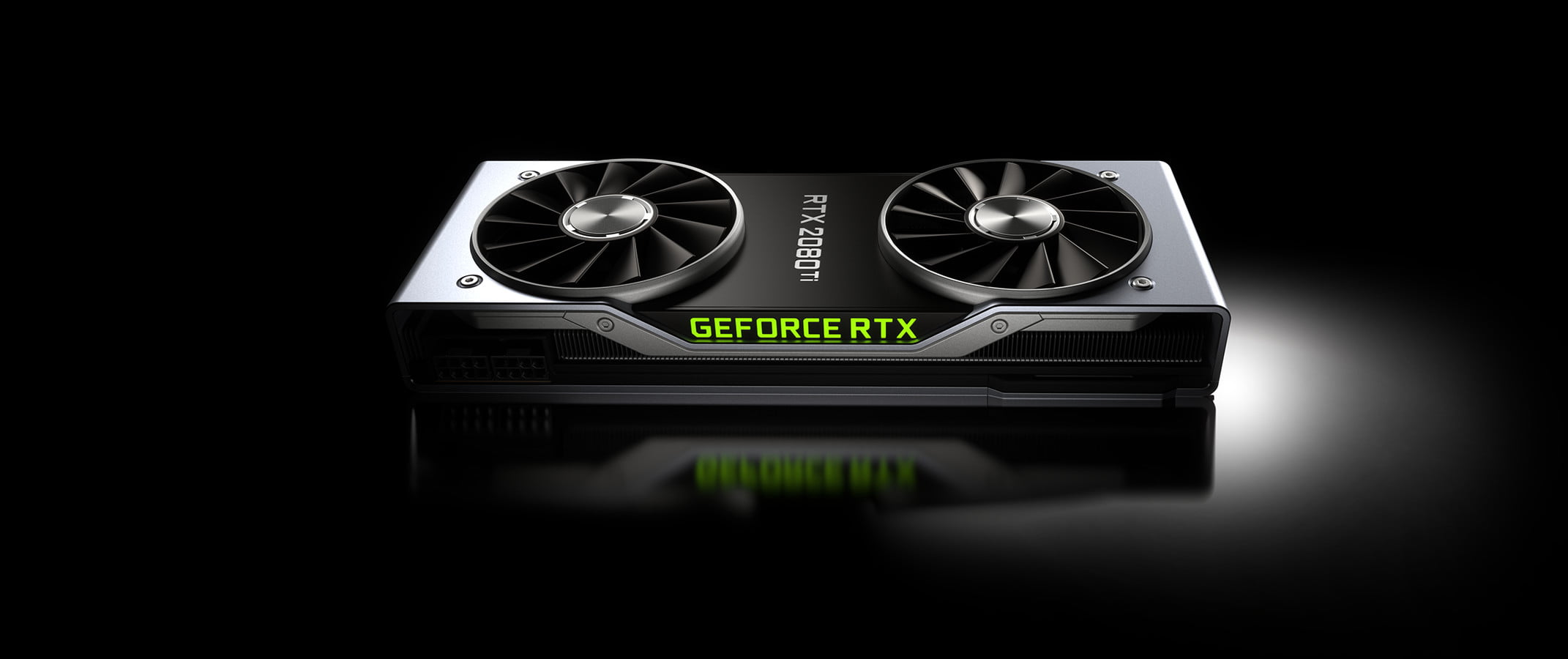RTX 30 Mobility will arrive in 2021. An interesting leak has allowed us to take a first look at the GeForce RTX 30 Mobility, the next generation of NVIDIA graphics cards that will arrive, if all goes according to plan, sometime in the first quarter of 2021.
It is important to note that, according to NVIDIA itself, the supply of the GeForce RTX 30 will continue to be scarce until March or April 2021, so it is likely that the launch of the GeForce RTX 30 Mobility will end up being very limited. It makes sense unless the green giant manages to significantly improve the supply of GPUs in a short time.
- MSI launched GeForce RTX 3090, 3080, and 3070 SUPRIM X
- NVIDIA says GeForce RTX 30 will satisfy demand in a few months
- GeForce RTX 3070 Ti may come with 7424 CUDA cores
Returning to the GeForce RTX 30 Mobility, we find ourselves with a rather interesting scenario, as according to the first information everything seems to indicate that NVIDIA will repeat the strategy we saw with the GTX 900 for laptops. In case anyone doesn’t remember, these graphics cards didn’t have the same specifications as their desktop counterparts, and were therefore much less powerful.
For example, a GTX 960M didn’t have 1,024 shaders like the GTX 960, but instead, it had 640 shaders and was closer to the GTX 750 Ti. The same happened with other models, like the GTX 970M, which had 1280 shaders instead of 1664 shaders like the GTX 970, and had 3GB-6 GB GDDR5 and a 192-bit bus. There was an explanation for these cut-away configurations. NVIDIA could not simply integrate a desktop GPU into a notebook. They had to reduce the specifications to limit consumption and avoid temperature problems.

GeForce RTX 30 Mobility recommended configurations
The filtration that we have had the opportunity to see includes a list of recommended configurations to accompany the GeForce RTX 3080 Mobility, GeForce RTX 3070 Mobility and GeForce RTX 3060 Mobility, three graphics cards that will use graphics cores and configurations other than the desktop equivalents, as we said before.
Unlike the RTX 20 series and notebooks based on the Ryzen 4000H chips, the new GeForce RTX 30 Mobility series will reach all levels of the new notebooks based on the Ryzen 5000 range. This means that you can buy a laptop with a Ryzen 7 5800H, for example, accompanied by an RTX 3080 Mobility without any problem.
With the Ryzen 4000H, the manufacturers did not go beyond an RTX 2060 Mobility, but this had an explanation, these APUs were limited to a PCIe Gen3 x8 interface, which reduced the bandwidth and crippled the performance of the more powerful graphics cores, at least according to the main sources within the industry.
The attached image shows the recommended configurations that NVIDIA provides to notebook manufacturers and vendors to accompany their new GeForce RTX 30 Mobility, a Core i5 or Ryzen 5 for the GeForce RTX 3060 Mobility, and a Core i7 or Ryzen 7 for the GeForce RTX 3070 and 3080 Mobility.

Possible GeForce RTX 30 Mobility specs
Before going into the possible specifications of each model I want to remind you that we will see Max-P and Max-Q variants, which means that both the working frequencies of the CPU and the graphics memory can vary greatly, and the same applies to the amount of integrated graphics memory, which should go from 8GB to 16GB. This memory will be GDDR6 and not GDDR6X.
It is totally understandable, keep in mind that an RTX 3080 has a TGP of 320 watts, a figure that is totally unfeasible in a laptop unless you are willing to shape a five kilogram (or more) mastodon. It is necessary to reduce consumption and to do this it is no longer enough to lower frequencies, you also have to reduce the active SM (Multiprocessor Stream) units. This is how the new GeForce RTX 30 Mobility will be configured.
GeForce RTX 3080 Mobility
- Graphic core GA103 in 8 nm.
- 6,144 shaders.
- 192 textured units.
- 96 raster units.
- 192 tensor cores.
- 48 RT cores.
- 256 bits bus.
- 8GB-16GB GDDR6.
- TDP of 115 to 150 watts.
GeForce RTX 3070 Mobility
- Graphic core GA104 in 8 nm.
- 5.376 shaders.
- 168 textured units.
- 96 raster units.
- 168 tensor cores.
- 42 RT cores.
- 256 bits bus.
- 8GB GDDR6.
- 80 to 90 watts TDP.
GeForce RTX 3060 Mobility
- Graphic core GA106 in 8 nm.
- 3.328 shaders.
- 104 textured units.
- 64 units of rasterization.
- 104 tensor cores.
- 26 RT cores.
- 256 bits bus.
- 8GB GDDR6.
- 60 to 70 watts TDP.
RTX 30 Mobility will arrive in 2021, we will keep you informed when the official information arrives.





